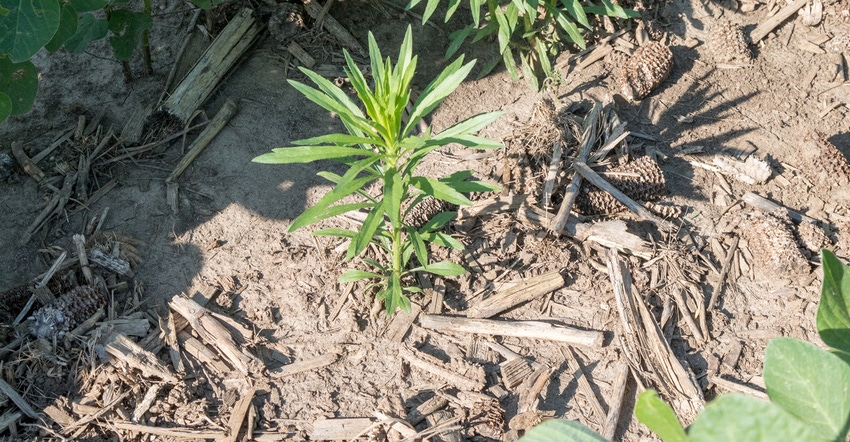November 26, 2018

Seeing winter annuals emerge postharvest instills a sense of uneasiness in farmers. But many times, it’s short-lived, as their focus quickly turns to other seasonal fieldwork. This makes weed control an afterthought until spring.
Farmers need to reconsider that strategy, especially when conditions leading up to harvest and postharvest point to higher counts of winter annuals germinating, says Jason Gibson, market development specialist with Corteva Agriscience, the ag division of DowDuPont.
That’s been the case in 2018 in many parts of the Midwest, with cooler temperatures and higher-than-normal levels of moisture-saturated fields. These conditions served to both delay harvest and provide ample fuel for weeds looking to germinate and overwinter to spring.
Combine that with many farmers electing to pass on fall weed control applications, and it could make for an exceptionally weedy spring, Gibson says. One weed in particular could flourish this coming season: resistant marestail. The cool, moist conditions point to plenty of marestail germinating this fall and causing issues in spring.
Marestail is generally considered the most difficult weed to control if it can overwinter into spring. A single female marestail plant can produce 200,000 seeds, the majority of which can survive through the winter. When this happens, marestail and other tough winter annuals grow rapidly as temperatures warm, robbing soil of two critical inputs for production: moisture and nitrogen. Farmers will likely feel that impact at next season’s harvest.
Stay ahead of tough weeds
“Instead of deferring action until spring, farmers can take an aggressive approach to stay ahead of the weed control curve,” Gibson says. “The solution is a postharvest burndown application. These applications should be made following harvest, but while conditions still remain favorable.”
The results provide farmers with a more streamlined workload with fewer hours of spring work, better-prepared fields at planting and the opportunity for increased yield at harvest.
There’s more. By implementing an effective fall burndown treatment, Gibson says farmers can also expect these benefits:
• the ability to combine a fall burndown treatment to control late-season emerged weeds with a spring residual herbicide treatment for enhanced weed control through planting
• control over winter annuals before they get established, so fields are ready to plant as soon as farmers are ready
• faster soil warming and dry-out, especially in no-till fields, by reducing the dead mat of weeds that may remain after a spring burndown
• creation of a warmer, drier seedbed for uniform crop emergence and better seedling vigor
• reduced insect pressure by controlling weeds that serve as habitat for populations to become established
Use right herbicides
One new tool to consider for fall burndown is Elevore herbicide. “It’s labeled for use preplant with soybeans, corn and cotton, and has excellent activity on marestail, even up to 8 inches tall, as well as other ALS- and glyphosate-resistant species,” Gibson says. “Elevore also works across various climate conditions, including being especially effective in cooler temperatures, making it a great fit for the challenging conditions many farmers are experiencing this fall.”
Watch the weather and scout for weeds year-round, he advises. “It allows you to adjust weed control plans to stay ahead of tough weeds and protect your yield potential.”
Source: Corteva Agriscience
You May Also Like




